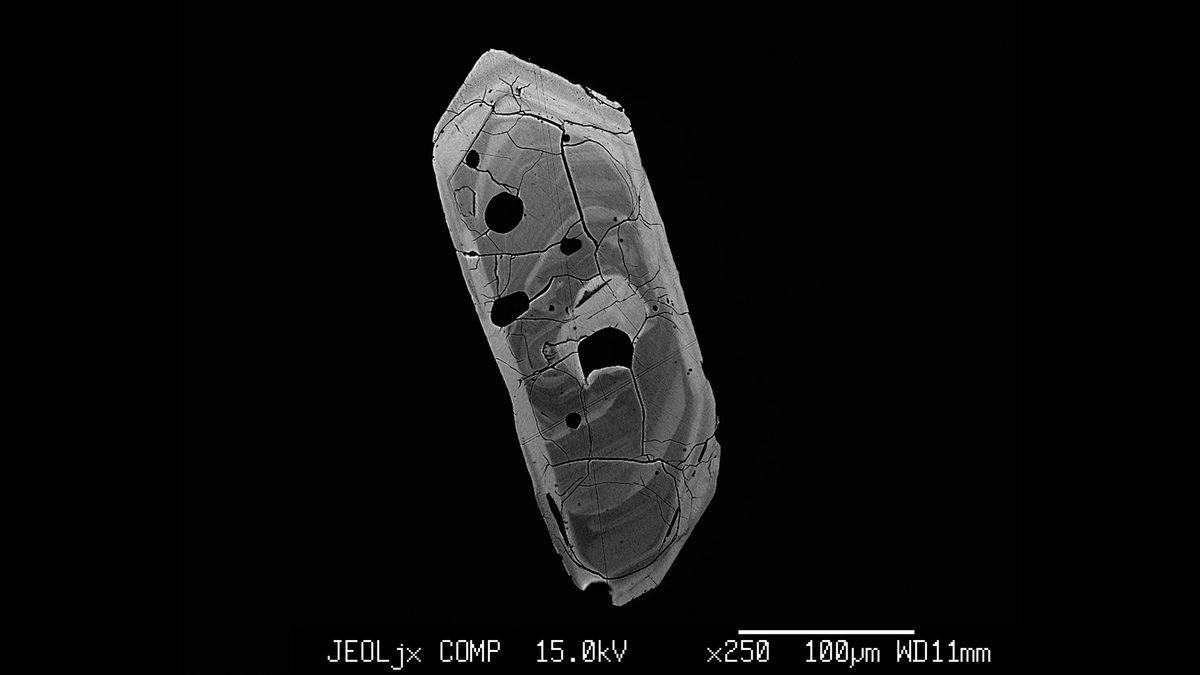By studying river crystals in Finland, researchers have identified traces of a hidden chunk of Earth’s crust from the heart of an ancient continent, a new study has found.
The crystals, from the mineral zircon, formed deep within the crust and provide clues as to how some of Europe’s oldest bedrock formed 3.75 billion years ago.
To make the discovery, the team studied three geochemistry tracers — uranium–lead, Lutetium–hafnium and Oxygen — to date the crystals and match their signatures to other ancient crust. The analysis revealed that part of the crust is about 250 million years older than scientists previously thought, and that it likely originated in Greenland, according to a University of Copenhagen statement released March 21.
The study sheds light on the formation and growth of Archean cratons, the oldest parts of the continental crust that formed during the Precambrian’s Archean era (4 billion to 2.5 billion years ago), when life first arose.
“Understanding how continents formed helps us understand why ours is the only planet in the solar system with life on it,” lead author Andreas Petersson, a geochemist at the University of Copenhagen, said in the statement. “Because without fixed continents and water in between them, we wouldn’t be here. Indeed, continents influence both ocean currents and climate, which are crucial for life on Earth.”
The researchers presented their findings in a study published Dec. 28, 2023, in the journal Geology.
Related: Greenland is losing so much ice, it’s getting taller
Previous research uncovered evidence for early Archean crust in the Pudasjärvi and Suomujärvi regions of Finland, according to the study. The team got the zircon crystals from river sands in these regions and discovered that the crystals had a similar isotope record to rocks in West Greenland’s North Atlantic craton, suggesting that part of Finland’s crust formed in Greenland.
“The zircon crystals we found in river sand and rocks from Finland have signatures that point towards them being much older than anything ever found in Scandinavia, while matching the age of Greenlandic rock samples,” Petersson said. “At the same time, the results of three independent isotope analyses confirm that Scandinavia’s bedrock was most likely linked to Greenland.”
All of these countries sit above a section of crust called the Fennoscandian Shield or Baltic Shield. The researchers now think this crust broke away from Greenland and moved around for hundreds of millions of years, before taking root where Finland is today. It then accumulated new geological material and grew to become Scandinavia, according to the statement. (Here, the research team uses the term “Scandinavia” to represent the Fennoscandian geological region, which includes Finland.)
Back when this split happened, Earth may have been completely covered in water. “Earth was probably a watery planet, like in the movie ‘Waterworld,’ but without any oxygen in the atmosphere and without emergent crust,” Tod Waight, a geologist at the University of Copenhagen, said in the statement. “But, because that’s so far back in time, we can’t be really be sure about what it actually looked like.”
Discovering a “seed” from an ancient continent that grew into what we see today may help us understand how other landmasses on Earth formed. “Our study provides us with another important clue in the mystery of how continents formed and spread across Earth — especially in the case of the Fennoscandian Shield,” Waight said. “But there is still plenty that we don’t know. In Australia, South Africa and India, for example, similar seeds have been found, but we’re unsure of whether they all come from the same ‘birthplace,’ or whether they originated independently of one another in several places on Earth.”

Dr. Thomas Hughes is a UK-based scientist and science communicator who makes complex topics accessible to readers. His articles explore breakthroughs in various scientific disciplines, from space exploration to cutting-edge research.







